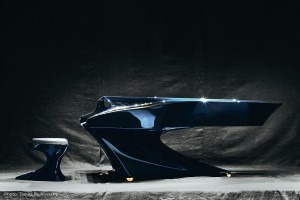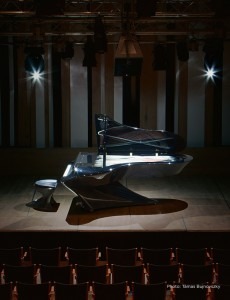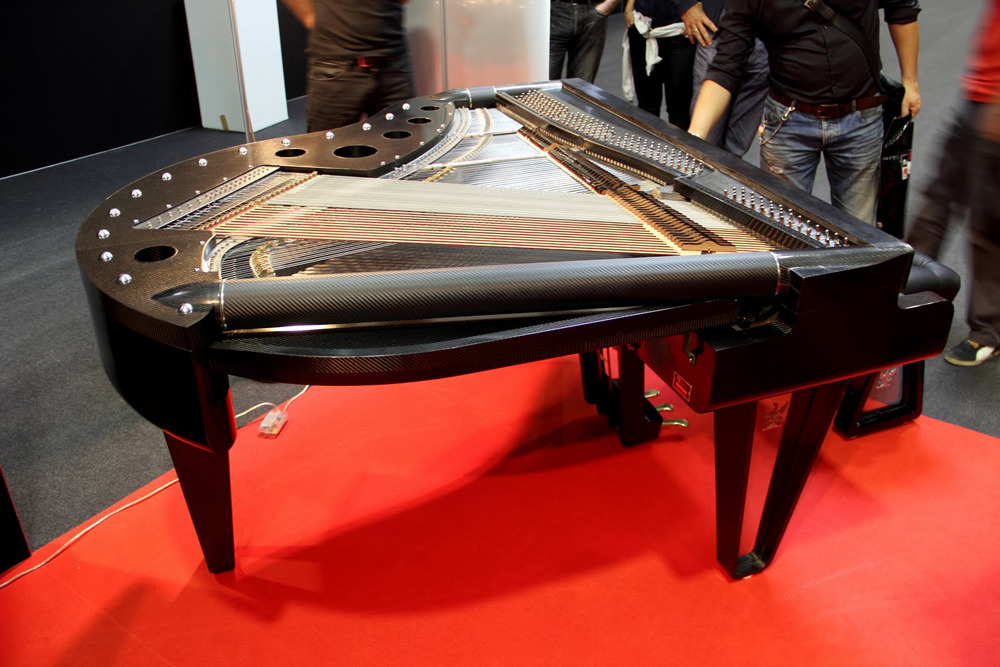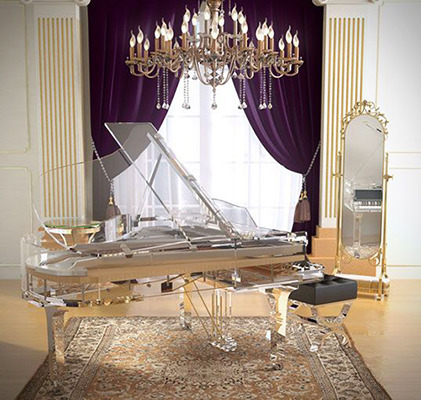
Credit: Tamás Bujnovszky
Stunning looks aside, the real innovation is actually found inside the instrument. Bogányi employs a revolutionary production technology to craft a soundboard made from a carbon composite! This replaces the traditional wooden boards, and it is clearly more resistant to exterior conditions. Humidity, heat, cold or excessive dryness no longer have a decisive bearing. In a word, it will probably drive a number of piano tuners out of business. The designer apparently had two reasons for tinkering with the soundboard system. For one, the concert pianist will now be able to easily play through and overpower even the most massive orchestral sound. The other reason has to do with the philosophy of building the instrument in the first place. Gergely Bogányi is not only a highly skilled piano technician, he is also one of the leading pianists of his generation.

Credit: Tamás Bujnovszky
I understood this might have been the same with J.S. Bach, Beethoven and Franz Liszt. To the extent that Liszt, for example, worked with the piano manufactures at the time to modify and improve the sound to match the expectations he had in his mind. How could I bridge the gap between the ‘miraculous’ sound in my head and that of the sound I was hearing?” Bogányi experimented and engineered for over ten years and with the introduction of the composite soundboard and other design and acoustic features, he achieved an “absolute distinction of tones that reveal more of the inner structure of music.”
Frederick Chopin: Ballade No. 1 in G minor, Op. 23 (Bogányi)
The instrument made its concert debut with Gergely Bogányi at the controls at the Liszt Academy in Budapest last month. A reviewer reports, “The first strike of a middle C told me this was unlike any piano I knew. The contact of key on string is head-on, nothing fuzzy at the edges, no after-burr. This is cooler, a trifle analytical, but no less agree-able as the ear adjusts. The pianissimi are delicious as clear broth, the middle dynamics are nutritious and only the heaviest of triple-fortes feels oppressive.” Bogányi has certainly created a spectacularly modern instrument for the 21st century. The breathtaking design, mimicking the movements and flows of classical music, will make this piano a conversation piece no matter where it makes an appearance. But it might actually be the crystal clear and stable sound qualities of the instrument that could conceivably change the way we listen to classical music.






